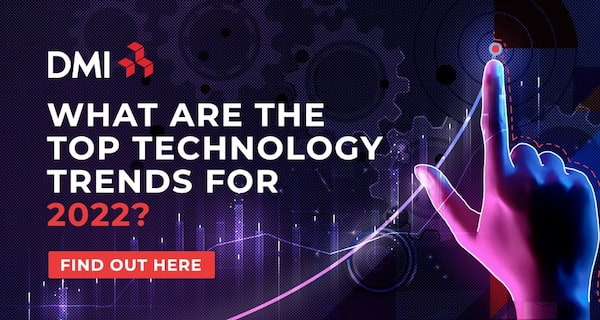
How Blockchain will Impact the Banking Industry in 2022
Blockchain technology is not new. The idea of an immutable record was first created in 1991 when two researchers wanted a system to track document timestamps that couldn’t be altered. It would take another twenty years, though, for the system that was outlined for document tracking to become Bitcoin, the first real-world application of blockchain technology.
Not only has the tech evolved into a moldable solution for everything from contracts to food safety, but it’s also changing the face of banking and financial services. As blockchain continues to be the darling of fintech and as the technology continues to mature, banks must closely consider how they can use blockchain within their operations.
The good news is that with the benefits blockchain brings to financial services, that shouldn’t be a hard sell. As we move into 2022, blockchain stands to have some substantial impacts on the banking industry, leaving banks and consumers largely in a better place.
The Impacts of Blockchain on the Banking Industry in 2022
Faster Settlement
Bank transfers, in-country or internationally, are a lengthy process that in today’s digital world can take days. Without an established financial relationship, the movement of funds from one institution to another must pass through and be validated by the initiating bank, intermediary payment systems, and the receiving bank, leveraging the centralized SWIFT network. This adds operational overhead for banks, fees, and inconvenience for customers.
Blockchain, on the other hand, could rapidly accelerate the process with a decentralized interbank ledger. SWIFT would no longer be needed for reconciliation and transaction settlement could happen directly on the interbank blockchain.
Fintech companies like R3 and Ripple are working with banks to make this a reality. Many players in regulated markets are already using R3 technologies, including Bank of America, Chubb, Wells Fargo, and ING on R3. At the same time, Ripple is supporting global financial payments and supporting real-time global payment systems in countries like South Korea, Thailand, and Japan.
Overcoming Legacy System Challenges
Banks face a double challenge – millions of records and proprietary systems sit on decades-old legacy systems, and they are fenced in by regulatory requirements. The transformation of many of these older systems is crucial; COBOL applications are not flexible enough to support the speed of innovation needed for today’s financial services, and mainframes are powerful but expensive to operate. Not to mention that monolithic applications are risky and difficult to maintain and update with new features.
Even though blockchain ledgers are decentralized and distributed (a stark contrast to the private systems used by banks today), this makes them more secure than traditional solutions.
As banks plan transformation projects to break apart monoliths and enable more flexible application development and product support, applications and microservices that access blockchain ledgers create agility in the development process while utilizing a secure infrastructure of transaction records and history.
Identity and Know-Your-Customer (KYC)
Fraud, money laundering, and even human trafficking have footprints that financial services providers must monitor for and protect against. While government-issued documents provide a means of verification, authentication of documents and security flaws in identification systems have made verification difficult.
With Know Your Customer (KYC) verification compliance costing governments and financial services organizations billions of dollars and KYC processes being lengthy and complex, banks need new ways to verify customer identities that are more secure, reliable, cost-effective, and fast.
It’s important to remember that blockchain is about storing pieces of information, not specifically about financial information. That makes it the ideal technology to streamline the KYC process. Customers who have entries with a KYC utility system can be verified almost instantly, allowing banks and governments to validate, add to, and access identity information as needed.
Taking full advantage of enhanced KYC processes with blockchain, however, requires that banks can plug KYC functionality into multiple product streams. For instance, rapid KYC validation can speed account setup, but can also have implications for loans and credit applications. Building out new applications following MACH standards – Microservices-based, API-first, Cloud Native, and Headless – supports rapid development within flexible technology ecosystems, reusing and recombining composable functional elements to create new products and services at speed and scale.
Opening the Door to New Customers
According to a report from the FDIC, 5.4% of U.S. households were “unbanked”, meaning that no one in the home had a checking or savings account. Among those identified as unbanked, 29 percent cited the reason for not having an account was a lack of funds to cover minimum balance requirements. Similarly, 16% of Americans are “underbanked”; they have a bank account, but rely on alternative financial services, as well.
Serving these populations would not only help the consumers, but it would also open doors for new customers for financial institutions. The costs of account maintenance and difficulties with management and settlement times, however, can prevent institutions from extending accounts to those who can’t keep a minimum deposit in their accounts.
A lack of access to banking services for low-income individuals and families, also known as financial inclusion, is an expensive proposition. Check cashing fees can be as much as 6%, turning recent stimulus checks, for example, into a burden. Everyone loses when consumers are unbanked or underbanked. It’s costly for families, and it’s a missed opportunity for new customers for banks.
Blockchain can help here, too. As previously mentioned, settlement can happen much more quickly for banks using a blockchain process, almost instantaneously. That creates an opportunity for low-balance bank accounts without concerns about overdrafts. Real-time settlements can act as cash in a customer’s wallet; they can only use what’s in their accounts, and no more.
As these consumers reduce their costs, ideally, they can build savings and credit. This creates a feedback loop that permits them to use more banking products. It’s a win-win for everyone but requires banks to use lower-cost settlement solutions, like blockchain, side-by-side with rapid development and innovation methods, like APIs and microservices.
Blockchain: A Top Tech Trend for 2022
For these reasons and many more, we’ve included blockchain as one of the important trends to watch next year in our recent report, “Top Tech Trends for 2022”. Many of these trends, from blockchain to hyperautomation, have applications that financial institutions need to consider in the coming year. Download your copy now.
If your bank is looking to accelerate business operations and growth, meet the growing demand for distributed work environments, and lower costs while increasing security, the trends in this year’s report are key. DMI can help you understand how to leverage these trends and build a strategy that can incorporate them into your existing ecosystem while advancing your transformation objectives. Connect with DMI to learn more about our digital transformation strategy and service offerings.
![[FREE RESOURCE] 10 Technology Trends You Need to Know](https://no-cache.hubspot.com/cta/default/8444324/70f3087e-225d-45f6-bb20-e5ed06bf0834.png)
